The Rise and Fall and Rise of Dino’s
Riverwest bar, revived once again, was among the first in the nation to serve Lakefront beer. The food is good, too.
Leo Dinon (1928-1996) was of a philosophical sort, a good looking fellow with angular features, piercing eyes and a trimmed mustache. A photo of a vigorous young Leo hangs in his old tavern today.
As the young manager of H&G Amusement Machines, which placed coin-operated devices in taverns and other places, Dinon helped organize tavern pool tournaments in the early 1960s. According to a 1964 article in Billboard Magazine entitled “Tournaments Boost Take for Pool Table Operator,” Dinon’s tournament concept “has caught on and is increasing the take, not only of the tables, but of jukeboxes and other games.”
Dinon suggested that organizers find a responsible league secretary, post results and standings near the tables, limit the number of teams to about a manageable dozen or so, located ideally if possible in a single neighborhood. This model is still employed in many tavern pool leagues in Milwaukee to this day. Dinon had to have a good ear for music at the time when you actually had to purchase the records that people would play on your jukebox.
In 1969, around the time he opened this bar, Dinon struck out on his own in the vending business, which was brutal at that time. In 1980 a federal court found that mobster Frank Balistrieri and his associates had muscled Dinon and his partner out of their most lucrative locations. So Dinon concentrated on his restaurant and bar.
After Dinon’s death, the bar was under irregular operation, and closed in 2009.
It has finally returned to life under the management of his grandsons, Anthony Lococo and his brother Lawrence Lococo, who grew up in the bar. The brothers and friends tore apart the old place and reconstructed the interior attractively.
The brothers opened up the boarded-over window in the 814 building, bringing light and an airy feeling to what had been a closed, paneled dining room. They didn’t mess with too many other features — the bar is still original, and Leo’s seat is still there — but did a fair part to make the place more suited to the contemporary Riverwest vibe, which is all about good living and fine drinking and dining. An original Bob Watt painting pays homage to a legendary Riverwest artist, and ties old and new together here. Cans are stacked on a shelf with Warhol-esque Campbell labels, and other modern artwork shares the walls with black-and-white family photographs.
Anthony had a nice mural painted in the women’s room, and paid particular attention to the lighting of the space, which is accomplished with attractive, contemporary fixtures.
The visitor’s attention is drawn to the original “Dino’s” neon sign in the front window, but a burnished steel “Dino’s Riverwest” projecting sign out front signals the New Riverwest, where by golly you better have microbeers if you expect to have any customers under 70 in your place. Other signs in the windows further the new neighborhood theme. They advertise “microbeers,” “craft cocktails,” “wine,” “appetizers,” “salads,” and “fresh pasta.”
These items were not exactly selling points in the prohibition era, if indeed they even existed in Riverwest. Oh, sure, the old Polish families might have enjoyed their beets, but chances are they were not dining on a salad of “roasted red beets, arugula, black pepper goat cheese, spiced walnuts and citrus vinaigrette,” as customers do today.
With the floors refinished and the walls neatly painted, and with the new window in the dining room, the place has an almost cosmopolitan feeling to it. This is something that would hardly have been expected in the tavern’s earlier days, but it fits right in with the new urbanism of the neighborhood.
Long History in Melting Pot Neighborhood
In 1911 Franz Schmidt paid $4,500 to construct a brick-veneered store and apartments at what was then 40 Chambers St. The architect was H. C. Hensel, who built other buildings in Riverwest and on the South Side. The use of the store was not mentioned, but the rising Polish immigrant neighborhood just west of the Milwaukee River was one of the thirstiest in the city. Here was the original land of “a bar on each corner and one in the middle of the block,” as the neighborhoods of this city of bars were sometimes described.
The building, now 808 E. Chambers, is on the middle of the block, and while the taverns on the corner are gone, this century-old place, under third-generation ownership and known since 1968 as “Dino’s,” is serving a new generation of Milwaukeeans. It is not too hard to imagine that this place has always been a saloon, so let’s take a step back in time.
With the repeal of Prohibition, Anton Andrzejezak, the tenant of the first floor, took out a Certificate of Occupancy in August, 1933 to operate the place as a tavern. The former occupancy was listed as “tavern,” as we have seen in numerous other instances.
A note at the bottom of the certificate of occupancy adds, “24 years business,” which indicates that either Andrzejezak had nearly a quarter century in the tavern racket, or that the building had been occupied as such and operated by others for about that amount of time.
What do you expect? — it’s the Depression in Riverwest. The answer — “Windows.”
In 1934, Riverside Building and Loan gave a lease to Matteo Vallone to occupy the place as a “Pool Hall”, listing its former use as “tavern.” Something went wrong there, and Riverside cancelled the lease. Vallone got his $2 permit fee refunded by the city.
The next year, in January 1935 Vallone was back, and got another occupancy permit for his pool hall. But, by July he was out of there, and the folks at Riverside rented the place to Alexander F. Gromacki. He turned the pool hall back to a tavern, and a tavern it has remained, with the occasional interruption when it was vacant.
By that time the Polish influence in the Riverwest neighborhood was pronounced, although the surnames of the operators were not always easily pronounced. In 1944 Peter Trzebiatowski added a cooler in the basement, which must have helped beer sales.
In 1948 Antonia Kowaliewski owned the place and took out a permit to raise the roof of a rear second floor apartment and to reorganize the room partitions up there. Eleven months later, there was no progress on the work, which was finally finished in 1950. That year, the landlady also hired the enterprising and slow Leo Simons to remodel her garage, while he was also running the bar downstairs. In July he started to underpin the garage, and then there was no progress noted until November, when the inspector found “trenches 24 in. deep.” Then there was no progress again until April 1951, when the inspector noted new 8 inch walls somewhere around the garage. By May 4th, 1951, Simons gave up and the garage was simply torn down.
Down at tavern level,Raymond Deresinski held the license for the bar, with Simons as his agent, and then things really slowed down on the building improvements. “Fix Wiring. Third and Final Notice,” the exasperated building inspector warned in 1948. Simons did get around to replacing the shop window with brick and two much smaller windows, giving the facade its current appearance.
Easygoing Simons then took over two years to construct a required boiler room in the basement, getting that project completed in summer of 1953. Meanwhile, Simons took out a permit in July 1952 to erect a third-floor dormer in the building. He finally finished that project in May, 1956. In June, the landlord was cited for having four “55 gallon drums of fuel oil with faucet attached in rear basement,” the inspector noted, ordering the owner to “provide pumps.” This too, took forever, as Simons was busy with his other pursuits.
In 1952 Ed Sherosky was running the bar so Simons could concentrate on his never-ending projects for Mrs. Kowalewski, and in that year he hung a neon Pabst sign above the entrance. In 1953, he hauled down the Pabst sign and replaced it with a Schlitz sign.
On July 4, 1953, a fire caused $1,500 damage to the interior of the bar when “a supposed cigarette set fire to upholstered bar, same set fire to contents and bldg. on first floor. … Burned bar completely — but floor has only a few burned spots. Took paint off of doors. Windows being replaced.” Well, that gave Simons something to do, and he drops out of our story until 1967 when he finally owned the building, according to city records.
The tavern was now called “Pal Joey’s” with Timothy A. Roeske as the licensee and Robert Foster, Jr. as the operator.
Finally, in 1969, the building was bought by Leo Dinon, and it has remained in his family ever since. It is with Dinon that the story of “Dino’s Riverwest” begins.
After naming the place “Dinon’s Lounge” in 1972, but listening to everybody call it “Dino’s Lounge,” the new name stuck. In 1981 Dinon connected the tavern to the building to the east at 814 E. Chambers, a configuration that remains to this day. That building, constructed in 1908, three years before 808 E. Chambers, was originally a shoe store, then vacant, then apartments, and then a photo equipment store in 1966.
In 1970, Dinon located his Dino Distributing Company there, offering “retail sales of new juke boxes.” By the early 1980s Dinon was out of the very complicated vending machine business, and he converted his old space into an extension of the tavern, offering delicious food cooked by his wife Rita, who owns the building today. It became popular for its fish fries and scratch-made Italian cooking, including delicious Pepper Shrimp, a signature dish.
In 1987 two brothers rented space in a building Dinon owned across the alley from the tavern and started a new company called Lakefront Brewery. Although the first Lakefront beer was sold on December 2, 1987 at Gordon Park Pub (I was there), Dino’s was an early customer of Russ Klisch and Jim Klisch. Riverwest Stein Beer by Lakefront Brewery remains on tap to this day.
Leo would sit at his regular spot at the end of the bar, the collar of his shirt neatly and stylishly turned up. He would smoke his cigarettes and do the Jumble game in the Milwaukee Sentinel. In a neighborhood that once had 50 bars — with a good dozen on E. Wright St. alone, Dino’s was a survivor during a rough period in the neighborhood. Admission was by buzzer, which we have seen in other Riverwest bars, which did not do much for the drop-in trade, but did keep the patrons feeling safe in an era of tavern invasions.
The big difference between Dino’s and the other old-line neighborhood taverns was the Riverwest Stein Beer on tap. This was in an era when your typical blue collar working class-bar — which was to say nearly every bar in the city of Milwaukee — only had Pabst, Old Style and maybe a Miller or Miller Lite on tap. Even hip and trendy East Side bars only served commercial brews. It took a great leap of faith for Leo Dinon, and a few others like Jim Linneman and Steve Johnson to offer the unknown product of a new brewery, even if it was next door. With only three tap handles at the time, it took considerable courage to reserve one of them for a rich amber beer that nobody had ever heard of. The brewery produced 72 barrels in 1988, and managed to remain in the building until 1998, when it produced 3,500 barrels in only 3,000 square feet of space. By 2013 it produced over 40,000 barrels in its new facility at 1872 N. Commerce St., and in 2014 it expanded an offsite warehouse and announced plans to construct a new building next to its Commerce St. property.
But from the start, Lakefront’s tours were popular. Many tourgoers headed to Dino’s for a beer afterwards. Sometimes folks from Dino’s headed to Lakefront for a tour. It all worked out fine.
Photo Gallery
The Rundown
- Location: 808 E. Chambers St.
- Neighborhood: Riverwest
- Subdivision: Moses Kneeland’s Subdivision
- Phone number: (414)791-6033
- Website: http://www.dinosriverwest.com/
- Facebook: https://www.facebook.com/pages/Dinos-Riverwest/340314109317517
- Description: Freshly re-done after several years absence, neighborhood bar / restaurant is ahead of the pace in recognizing the New Riverwest, with upmarket food and drinks.
- Food: Yes, and worth the trip for that alone. Riverwest Burger has onions braised in Riverwest Stein beer. Famous fish fry, and wings, plus more adventurous offerings like Root Vegetable Salmon Salad, Linguine & Clams and Pesto Gnocci.
- Signature Drink: Have a Riverwest Stein Beer at one of the first places in the nation to serve it. Formerly brewed across the alley.
- Capacity: Could not be determined.
- Restrooms: Women’s, men’s rooms.
- Year Established: Under current family ownership since 1968. Tavern since end of Prohibition, and probably before. Owner-occupied for three generations.
- Year Building Constructed:1911, annex to east, 1908. Periodic remodelings, most recently 2011-2014.
- Estimated Annual Rent: $10,600 per year for 2,000 s.f. tavern according to assessor’s calculations. Property is assessed at $208,000; operator’s grandmother owns building.
- Walk Score: 84 out of 100, “Very Walkable.” Most errands can be accomplished on foot. Bit of a hike to a grocery store. E. Locust St. just a block to south.
- Transit Score 53 out of 100, “Good Transit”
- Games of Chance: None.
- Games of Skill: None.
- Aldermanic District: 3rd, Nik Kovac.
- Trade Name : Dino’s Riverwest
- Police District: 5
- Premise Description: First Floor and Basement Storage
Hours of Operation
Note: Tavern owners lead complicated lives, so it is always best to call ahead for hours.
| Is Open? | Day | Open | Close | Expected Customers | Age Restriction |
|---|---|---|---|---|---|
| True | Sun | 8:00AM | 2:00AM | 25 | |
| True | Mon | 8:00AM | 2:00AM | 25 | |
| True | Tue | 8:00AM | 2:00AM | 25 | |
| True | Wed | 8:00AM | 2:00AM | 25 | |
| True | Thu | 8:00AM | 2:00AM | 30 | |
| True | Fri | 8:00AM | 2:30AM | 50 | |
| True | Sat | 8:00AM | 2:30AM | 50 |
Bar Exam
-
Lakefront Brewery’s New Riverwalk Patio
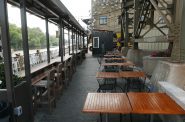 Jul 26th, 2023 by Michael Horne
Jul 26th, 2023 by Michael Horne
-
How Falcon Bowl Was Saved
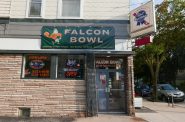 Jul 12th, 2023 by Michael Horne
Jul 12th, 2023 by Michael Horne
-
Clementines Evokes the New Bay View
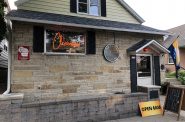 Sep 19th, 2022 by Michael Horne
Sep 19th, 2022 by Michael Horne


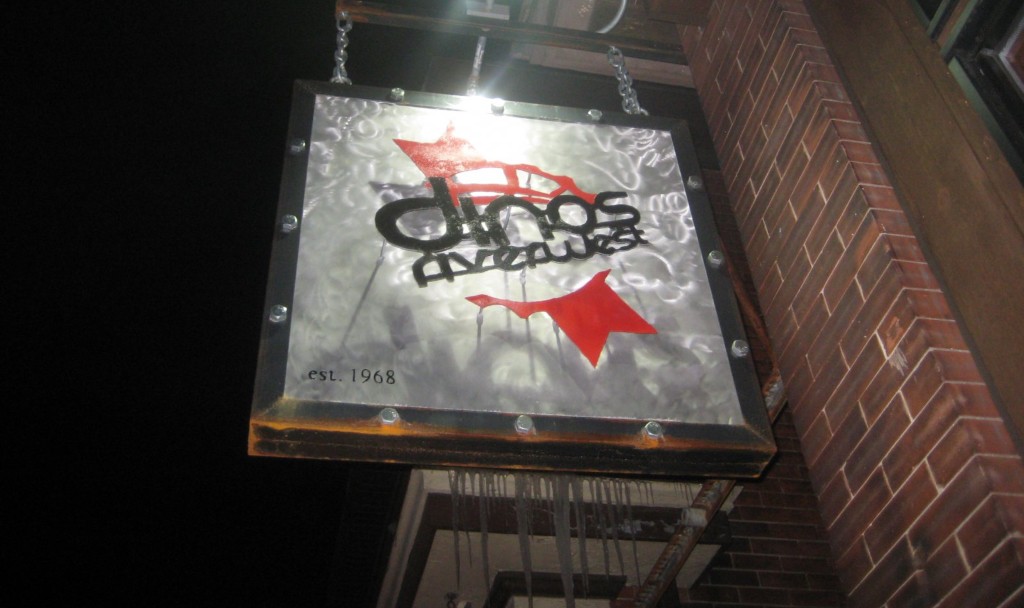
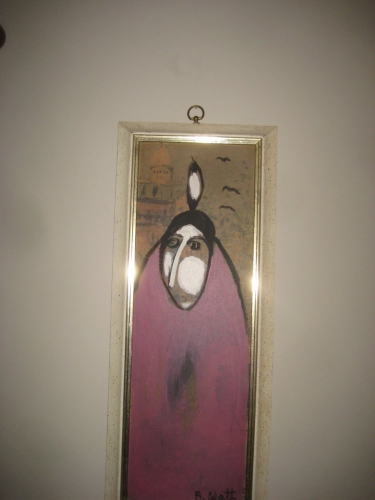
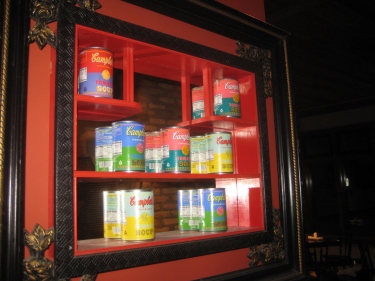
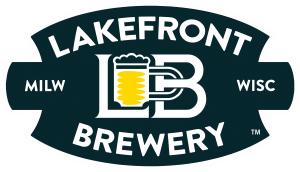
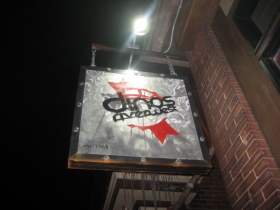
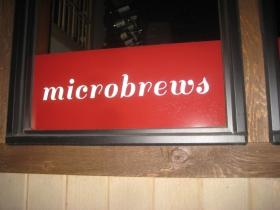
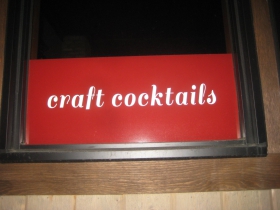
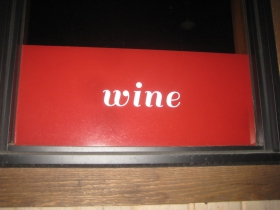
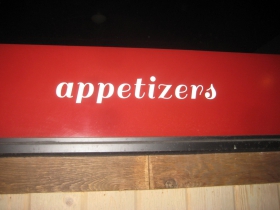
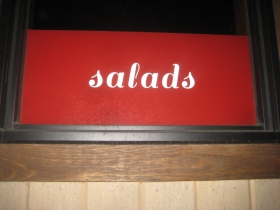


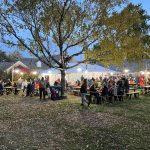











A cosmopolitan Dino’s? Can’t wait to go there (you go everywhere, Michael Horne)! I especially liked the “Warhol-esque” photo!